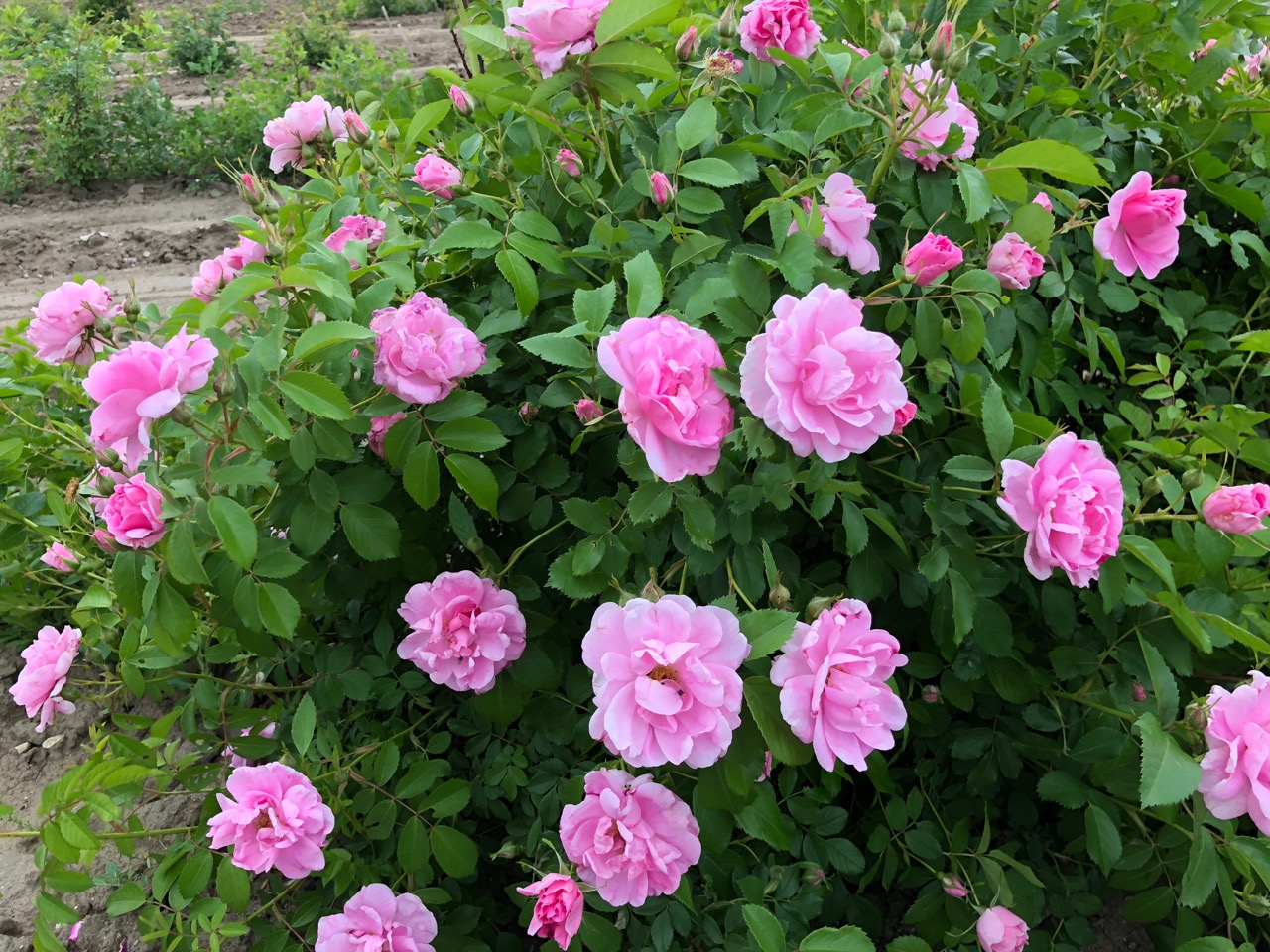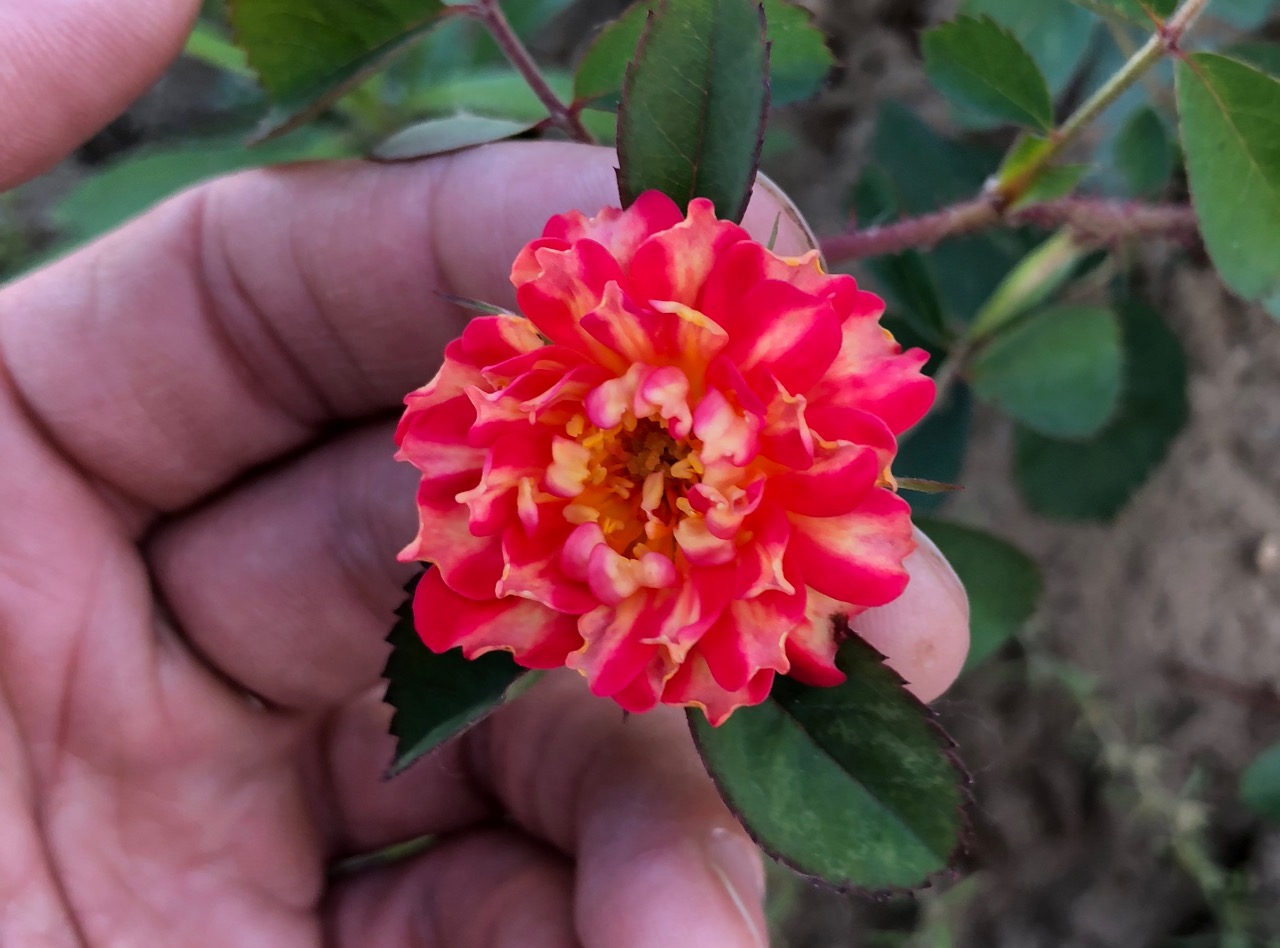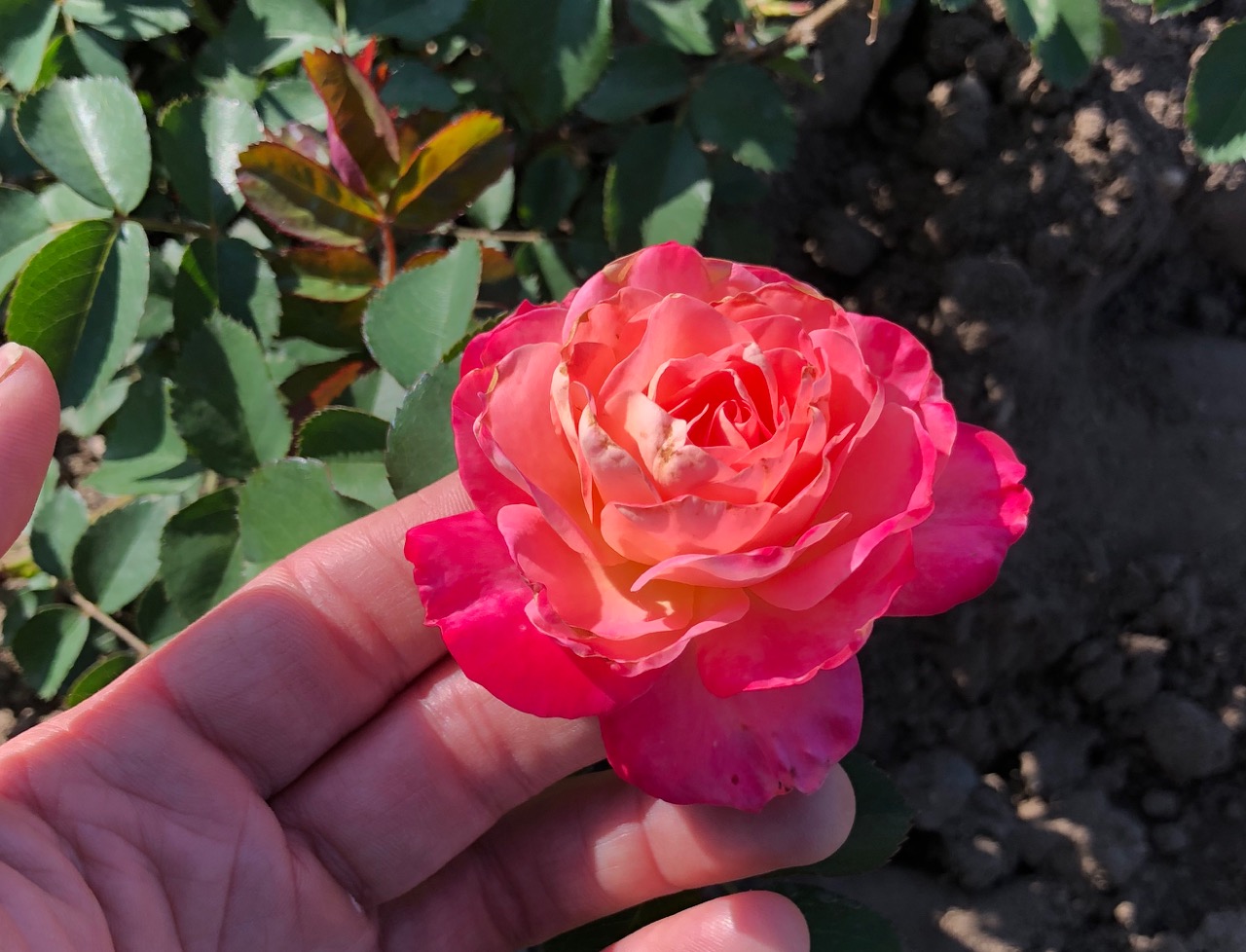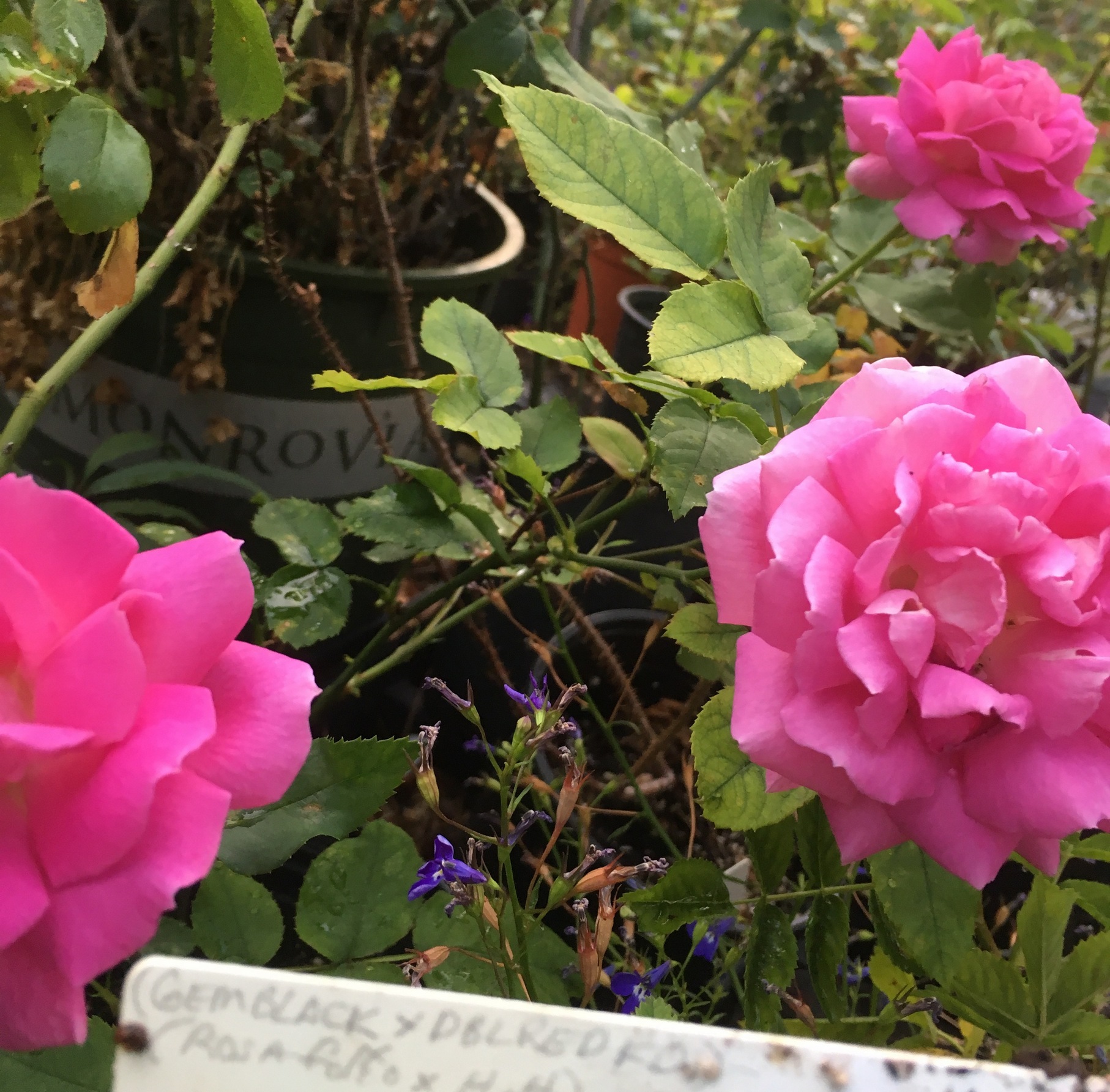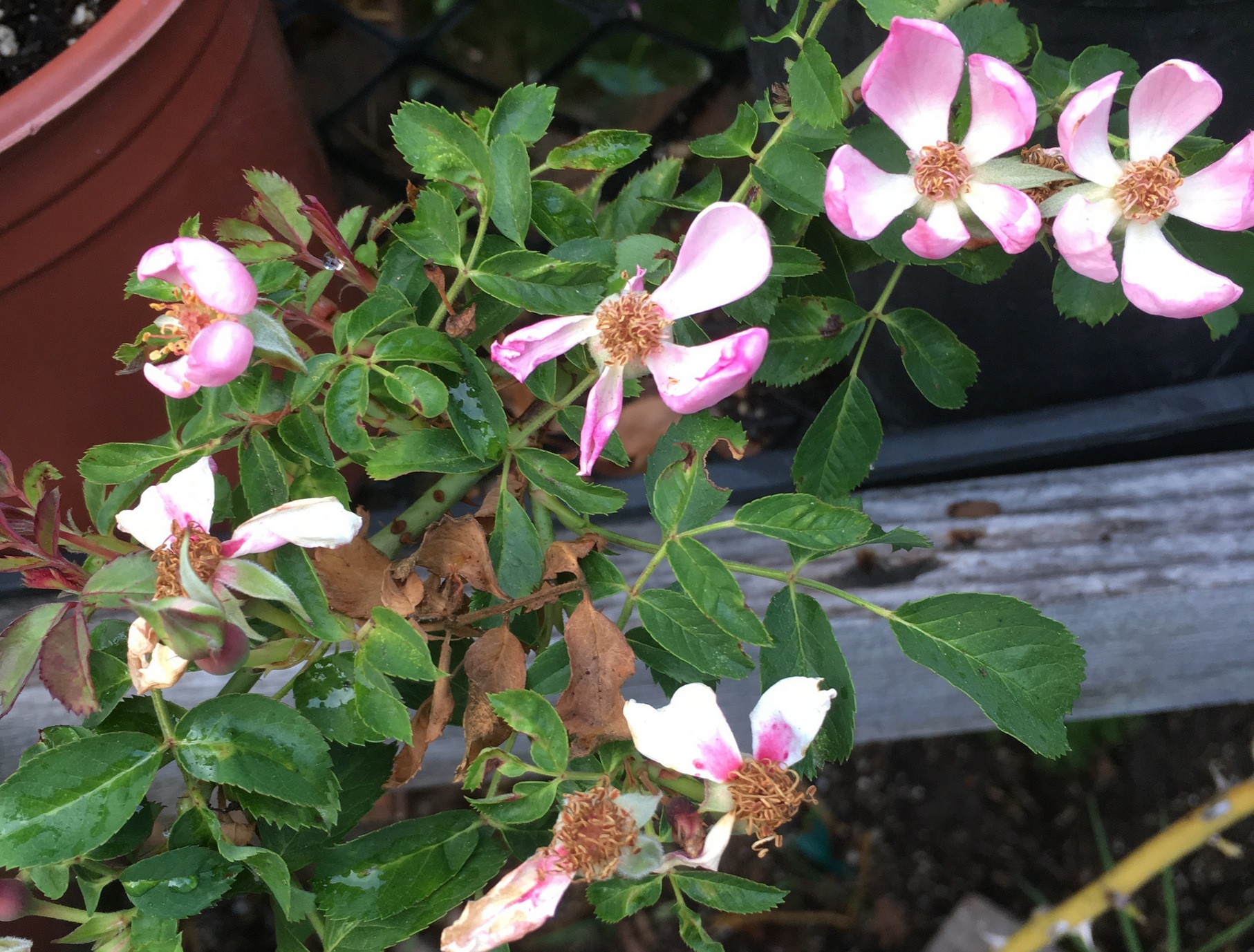Step one: Cross a tender, everblooming rose with a hardy tetraploid species rose.
Step two: line out seedlings to observe that may never be able to bloom in my climate because they don’t have enough live wood.
Step three: select a seedling that has good health and vigor to dig up and store inside over winter so it can bloom the next year.
Step four: When that seedling blooms, cross the heck out of it back to everblooming roses and keep only the tiny minority of seedlings that show juvenile rebloom.
So far I have gone down this arduous path with three crosses:
Gina’s Rose x R. virginiana (resulting in a seedling I call GRVIRG)
First Impression x R. virginiana (FIVI3)
All A’Twitter x R. virginiana
With FIVI3 I put it so much effort and had so many seedlings and so few juvenile bloomers that I ended up keeping many of the non-blooming F2’s. There were only a tiny percentage of remontant F1’s, a phenomenon about which David Z mentioned “preferential pairing.” The non-remontant plants show good health and vigor and a few were able to bloom in this their second year. However, I’ve already diluted the R. virginiana down to 25% and those seedlings STILL might not have more than two out of four of the sets of reblooming genes.
So can I change my strategy? Use a slightly hardier reblooming rose so that crossing it with a species rose will result in seedlings that carry enough live wood to bloom when planted outside.
One annoying complication is that some reblooming roses seem to have the tendency of not passing on reblooming genes all of the time. Examples include Prairie Joy, Cherry Frost, Peter’s #42 (from Morden, L83 x polyantha), and my seedling #1019 (a rudely healthy and awkwardly vigorous plant that blooms non-stop). Even when crossed with modern rebloomers the aforementioned roses do not give a majority of juvenile remontant seedlings. This makes me question any assertion that remontancy is a straight recessive.
I’m hesitant to use these hardier roses to go down the species rose path. I will have no idea if the F1 with the species will carry even 50% reblooming genes, so any efforts to get a reblooming F2 might be futile.
Paul Barden’s words are a tickling echo in my mind: “Some of my most heavily remontant seedlings have not blooomed AT ALL the first season.” However, I have no experiences to match this and I have to assume that most of my seedlings that do not bloom the first year are never going to be remontant.
Except for those pesky rugosas. Rugosas are the only roses in my climate that are both tip hardy and remontant. That makes them a tempting pathway towards combining hardiness and rebloom. But their tendency of delayed remontancy is very frustrating. For example, I have a Rugosa x Cherry Frost seedling that is robust and vigorous, but in it’s second year is showing no signs of blooming. Remember that Cherry Frost doesn’t always give rebloomers anyways - this seedling might never bloom and it’s taking up field space. Some rugosas can produce juvi-blooming F1’s when crossed with moderns. I noticed about three or four out of twenty Will Alderman x OP seedlings that are blooming as youngsters. On the other hand, I have dozens or hundreds of seedlings from another remontant rugosa that are not blooming as youngsters. Another issue with using rugosas crossed with modern roses is that the resulting plants seem to be sterile triploids most of the time. (see Henry Hudson x Above & Beyond pic below.)
One possible success: I have a Lemon Fizz x R. carolina seedling that is able to produce a handful of yellow blossoms each year. From putting its pollen on Yellow Brick Road I have about three out of twelve seedlings that are blooming young this year. I will contain my excitement because YBR has shown some tendency toward accidental selfs, but ok I’m excited because they look like they might actually be from the intended cross. It would be really fun to have a reblooming yellow rose that was 25% R. carolina, was as healthy as Lemon Fizz, and hardier than LF or YBR.
See captions for parentage of the following. The Hannah Gordon x FIVI3 seedling is remontant and might actually be the intended cross…fingers crossed that it will be hardy and healthy.
